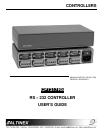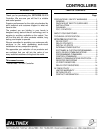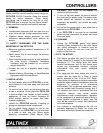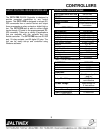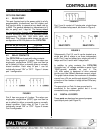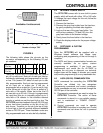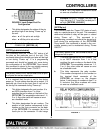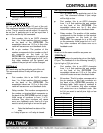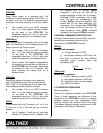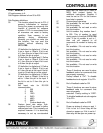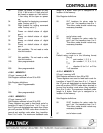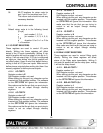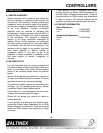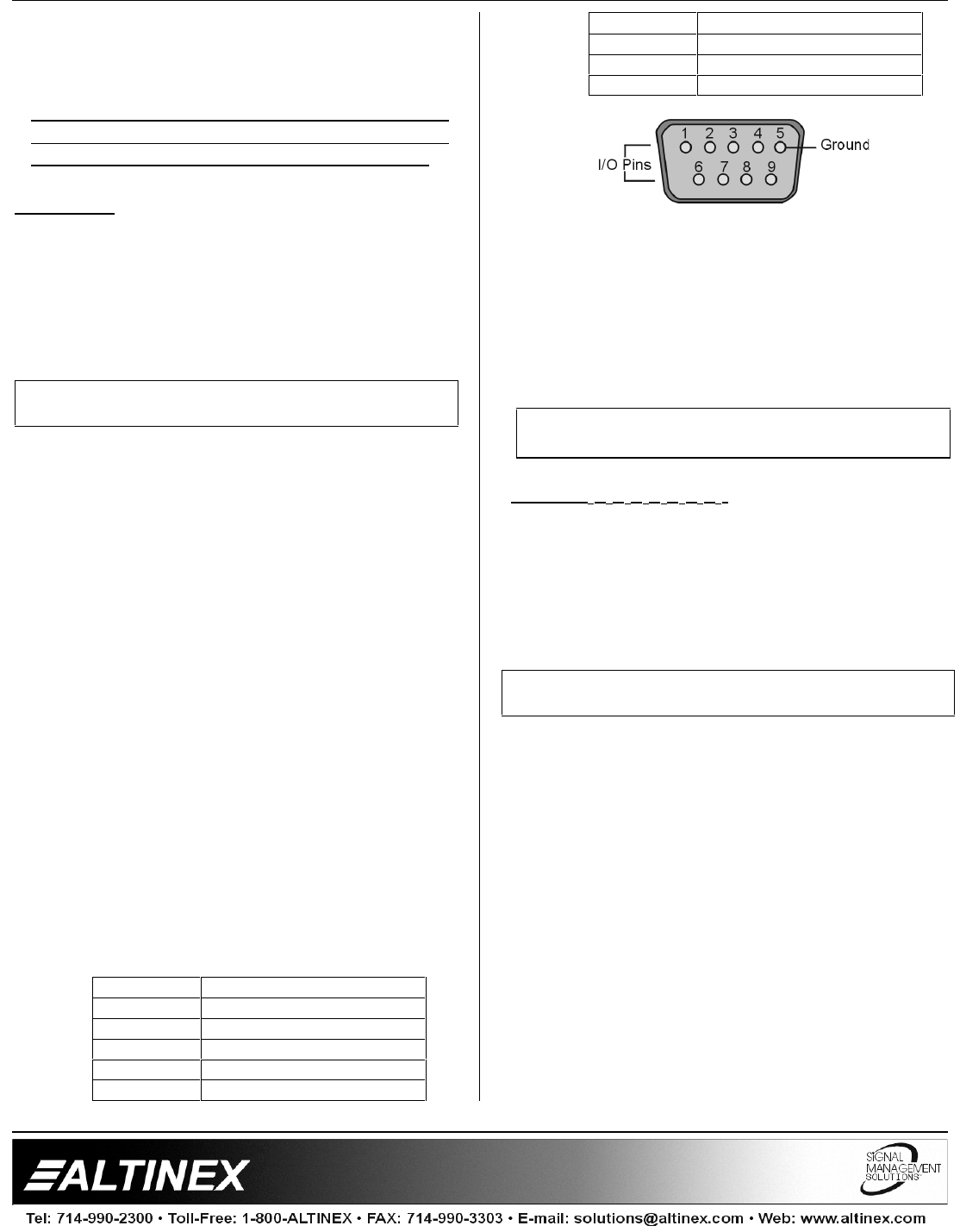
CONTROLLERS
6
4.7 PROGRAMING COMMANDS
The commands below are used for presetting the
default status of the unit.
Note: AFTER USING THE PROGRAMMING
COMMANDS LISTED BELOW, THE CP7317RS
SHOULD BE POWERED OFF AND THEN ON.
[SETIp,b,n]
This command sets individual pins of each I/O port
to input or output status. It is a programming
command and needs to be issued only once during
the configuration of the CP7317RS. Once issued, it
is stored in the non-volatile memory
and is maintained during the “Power ON/OFF”.
The factory preset for the CP7317RS is that all
pins on I/O ports are set as output pins.
When the pin is set as input, then an RS-232 code
is produced whenever the pin changes from high to
low or from low to high. When the pin is set as an
output, then the RS-232 command is sent through
the RS-232 port can change the specified pin to
high or low. (The RS-232 code cannot be produced
when the pin is set to the output status and the pin
set to the input status cannot be set to low with the
[SETD] command as all the pins with input status
are always high).
p This letter designates a port number. It is
an ASCII character ranging from 1 to 4 and
matching the port number on the rear panel
of the CP7317RS Controller. The
acceptable values are 1, 2, 3 or 4. Any
other value will cause an error as a
feedback code.
b Bit number. This bit number relates to
the pin number on the 9-pin connector on
the back of the CP7317RS according to the
following table. A valid range of numbers is
from 1 to 8, inclusive. Any other numbers
will cause an error as a feedback code.
Bit No. Connector pin No.
1 1
2 6
3 2
4 7
5 3
Bit No. Connector pin No.
6 8
7 4
8 9
FIGURE 5: Input/Output Port Pin Configuration
n This letter designates the status of the pin
on that particular port as either input or
output.
when n = 1 the pin is set as input
when n = 0 the pin is set as output.
Example: [SETI1, 6,1] – this would set
port 1, pin 6, to an input status.
[SETIp,b
1
b
6
b
2
b
7
b
3
b
8
b
4
b
9
]
This sets all the pins in an I/O port to either input or
output status. It is a programming command and
needs to be issued only once during the
configuration of the CP7317RS. Once issued, it is
stored in the non-volatile memory and is
maintained during the “Power ON-OFF”.
The factory preset for the CP7317RS is that all pins
are set as output pins.
When the pin is set as the input, then an RS-232
code is produced whenever the pin changes from
high to low or from low to high. When the pin is set
as an output, then RS-232 commands sent to the
RS-232 port can change a specified pin to high or
low. (The RS-232 code cannot be produced when
the pin is set to an output status and the pin set to
an input status can not be set low with [SETD]
command as all pins with input status are always
high).
p This letter designates a port number. This is
an ASCII character from 1 to 4 that
matches the I/O port number on the rear
panel of the CP7317RS. The acceptable
values are 1,2,3 or 4. Any other value will
cause an error as a feedback code.



